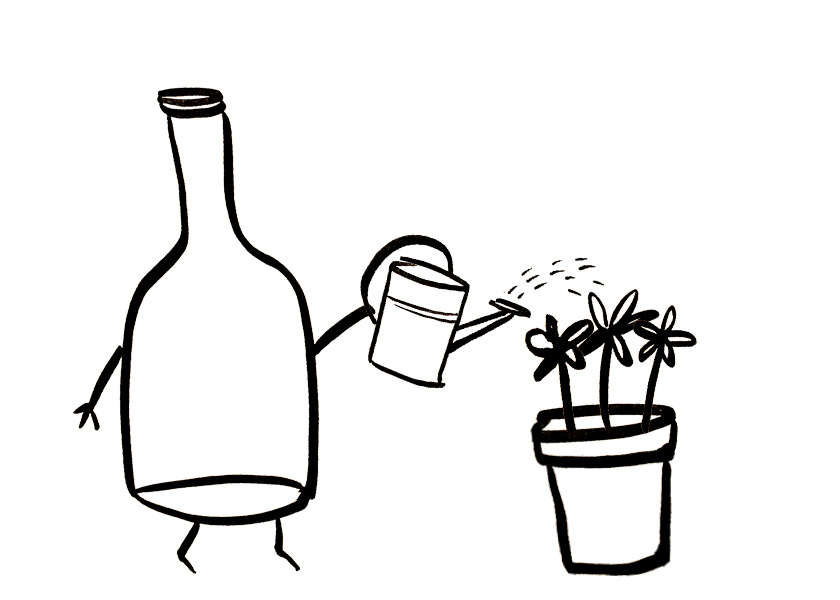The Only Two Ways to Grow a Wine and Spirit Distributor
What works, why more companies don’t do it, and some advice on getting rich
If you want to become rich, you should do two things: save and invest. There are other ways to become wealthy: buy a winning lottery ticket, invent the next Spanx, or inherit a fortune. Those things don’t constitute an actionable plan or a guaranteed outcome; they do require an unfathomable amount of luck. Thus, boring is best when it comes to growing your fortune.
Similarly simple advice is true for wine and spirit distributors.
If you want to grow, you should do two things: hire more salespeople and add more brands to your portfolio.1
Like saving and investing for wealth, no other two steps will yield as sure an outcome.
Others might share anecdotes of distributors built by some other means, but lacking both hindsight and a time machine, those instances are irreplicable.
Why does it matter?
In this business, growth is equivalent to relevance. Stagnation is death. Failure to realize new opportunities through the expansion of one’s portfolio or sales force will be met with apathy or antipathy.
A growing portfolio should recognize changing tastes and new emerging categories, while faithfully retaining stalwarts brands. A growing sales team reflects changing demographics and greater market penetration.2
Customers will naturally be curious about what’s new or hot or different.3 A changing vintage won’t usually scratch that itch. Pre-existing sales reps will be disinclined to want to see the sales team grow. They should be reminded that a bigger team means more suppliers might want to sign on with your company.
Growth also acts as a signal to observers and stakeholders. It tells them there will be a future and it is bright. Growth conveys a message of abundance to suppliers, salespeople, customers, and competitors.
Why does it work?
The facts are telling. Per capita consumption of alcohol in the US has been flat over the last 30 years. Organic growth in the wine and spirit industry is spurred by the combination of changing consumer preferences between wine, beer, and spirits and changing demographics. This means that real growth in distribution is reliant on scooping up the greatest number of products (that make sense for your portfolio) and selling them to the greatest number of customers.
Why don’t more companies do it?
If success were as simple as following advice, the world would likely be a happier, healthier, and wealthier place. It’s difficult to focus only on what you can control when it’s so easy to mistake the noise for the signal. To fall back on the earlier investing analogy, who wants to get rich slowly by saving and prudently investing when a windfall can be made by gambling on stonks and Dogecoin?
When it comes to growing a distributor, it’s no different. Many would rather look for shortcuts than do the real work (and spend the real money) necessary to grow the portfolio and the sales team.
The belief that the right incentive will spark meaningful growth ignores the recent observation by Joshua Brown:
How hard you have to sell something is directly proportional to how bad it is for the buyer.
When it comes to investing, the sure path is to get rich slowly. When it comes to growing a distributor, the sure path is to get big smartly. If you want your company to sell more, you need more people selling more items.
Other forms of growth are important to being a successful distributor: growing the quality of your customer service, increasing employee happiness and morale, and streamlining internal processes and protocol for greater efficiency. These are ground for why someone wants to buy from your company in the first place or for why someone wants to work for your company.
A changing portfolio or sales force should not be confused with a growing one. Replacing one product or person with another is simply a great way to stay in place.
Beware the “trendmill.” The unplanned addition of sparkling rosé pet-nat and low alcohol RTDs can unnecessarily distract from pre-existing suppliers. A Google search reveals that a now-defunct, late-aughts startup coined the portmanteau “trendmill.” However, seeing that a definition for this neologism wasn’t found on Urban Dictionary, I created one: “The detrimental preoccupation with the latest trend, fashion, or meme by a person or company. ‘John’s style is so tiringly derivative; he just can’t seem to get off the trendmill.’”


I love reading these. I agree that more sales reps with a growing portfolio go hand in hand.
Also, use your existing team wisely! People that are willing to put in the work to help you grow, not only keeps them motivated it keeps you fresh!